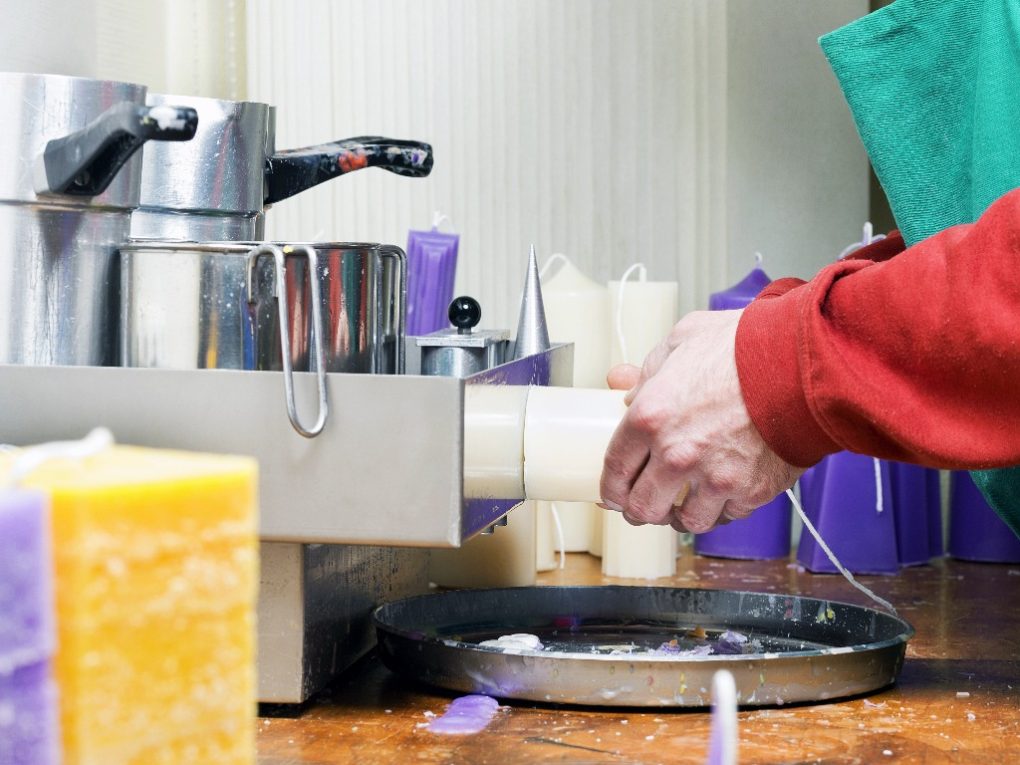How Do I Stop My Soy Candles From Frosting: Causes of Soy Candle Frosting and How to Deal With It
Soy candle frosting is a common issue when the wax in the candle cools too quickly and forms a white, cloudy layer on the surface. While frosting does not affect the quality or performance of the candle, it can detract from its appearance. Here are some simple tips to help prevent soy candle frosting:


- Melt the wax slowly: When melting soy wax, it’s important to do it slowly and at a low temperature. Rapid heating can cause the wax to cool too quickly and result in frosting.
- Add Vybar: Vybar is a wax additive that can help prevent frosting by improving the wax’s ability to hold fragrance and color. Add a small amount of Vybar to the melted wax before pouring it into the candle jar.
- Use a heat gun: After pouring the wax into the candle jar, gently warm the wax’s surface. This can help to even out the cooling process and prevent frosting from forming.
- Avoid drafts: Soy wax is sensitive to changes in temperature, so it’s important to avoid placing the candles in drafty areas. Keep the candles away from open windows or doors and other sources of cold air.
- Cure the candles: Allowing the candles to cure for a few days before burning can help to prevent frosting from forming. This gives the wax time to cool and settle, reducing the likelihood of frosting.
Causes of Soy Candle Frosting
Soy candle frosting is a common occurrence that can be frustrating for candle makers. The frosting is the natural crystallization of the wax, which creates a frosted or white appearance on the candle’s surface. There are several causes of soy candle frosting, including:
- Temperature changes: Any change in temperature after the wax is poured can cause candle frosting, according to Home Again Studios. This includes temperature changes during shipping or storage. Soy wax is particularly sensitive to temperature changes, which makes it more prone to the frosting.
- Wax additives: Some wax additives can increase the likelihood of frosting. For example, adding fragrance oils or colorants to the wax can cause the wax to crystallize more quickly, resulting in frosting.
- Pouring temperature: The temperature at which the wax is poured can also affect the likelihood of frosting. If the wax is poured at too high a temperature, it can cause it to cool too quickly, resulting in frosting.
Understanding the causes of soy candle frosting is the first step in preventing it from happening. By taking steps to control the temperature, using the right additives, and pouring the wax at the proper temperature, candlemakers can minimize the occurrence of frosting and create beautiful, smooth candles.
Preventing Soy Candle Frosting
Soy wax candles are popular because they are natural, eco-friendly, and long-lasting. However, one common issue that soy candle makers face is frosting. The frosting is a natural occurrence in soy wax candles, creating a white, powdery appearance on the candle’s surface. While it doesn’t affect the candle’s performance, it can be visually unappealing. Fortunately, there are ways to prevent soy candle frosting.
Temperature Control
Temperature control is crucial in preventing soy candle frosting. Soy wax has a low melting point, so that it can be sensitive to temperature changes. Keeping the temperature consistent throughout the candle-making process is essential to prevent frosting.
Based on experience, when melting the wax, it’s best to use a double boiler and gently heat it. Avoid overheating the wax, as this can cause frosting. Once the wax is melted, let it cool to a suitable pouring temperature. Pouring the wax at a lower temperature can help reduce the likelihood of frosting.
After pouring, it’s important to cool the candles at room temperature or above. Avoid placing the candles in a cold area, which can cause frosting. Using wire racks for even cooling can also help prevent frosting.
Proper Pouring Technique
Proper pouring technique is also essential in preventing soy candle frosting. When pouring the wax, it’s important to do so gently and avoid vigorous stirring. Overmixing the wax can cause frosting. Pouring the wax slowly and gently can help reduce the likelihood of frosting.


Preheating the glass candle containers can also help prevent frosting. Place the containers in a warm oven at a maximum of 100°F for a few minutes before pouring the wax. This can help the wax adhere to the container and reduce the likelihood of frosting.
Using Additives
Using additives in soy wax can also help prevent frosting. Some additives, such as stearic acid, can help stabilize the wax and reduce the likelihood of frosting. However, using additives in moderation is important, as too much can affect the candle’s performance.
Colorants can also affect the likelihood of frosting. For example, using non-colored soy candles can help reduce the visibility of frosting. Alternatively, using darker colorants can help mask the frosting.
Overall, preventing soy candle frosting requires attention to temperature control, proper pouring technique, and using additives in moderation. By following these tips, soy candle makers can create beautiful, frost-free, visually appealing, and long-lasting candles.
Fixing Soy Candle Frosting
Reheating the Candle
One way to fix soy candle frosting is to reheat the candle. This can be done by placing the candle in a warm oven for a few minutes or using a double boiler on the stove. The goal is to melt the top layer of the candle and allow it to cool slowly, which can help reduce frosting.


Blow Drying the Candle
Another method to fix soy candle frosting is to use a blow dryer to heat the top layer of the candle. Hold the blow dryer a few inches away from the candle and move it around to heat the surface evenly. Be careful not to overheat the candle, as this can cause it to melt or become misshapen.
Using a Heat Gun
A heat gun can also be used to fix soy candle frosting. Hold the heat gun a few inches away from the candle and move it around to heat the surface evenly. Again, be careful not to overheat the candle, which can cause damage.
It’s important to note that these methods may only provide temporary relief from soy candle frosting. To prevent frosting from occurring in the first place, consider using a different wax blend, preheating your containers, pouring at a lower temperature, and avoiding drafts during the cooling process.
Following these tips and using the methods above can help reduce soy candle frosting and create beautiful, smooth candles.
